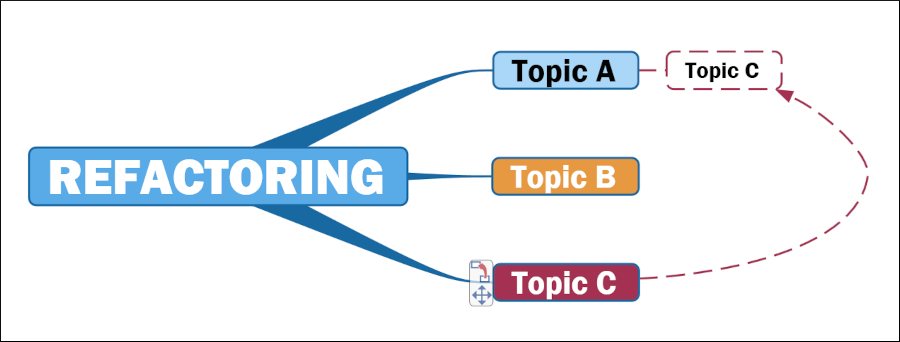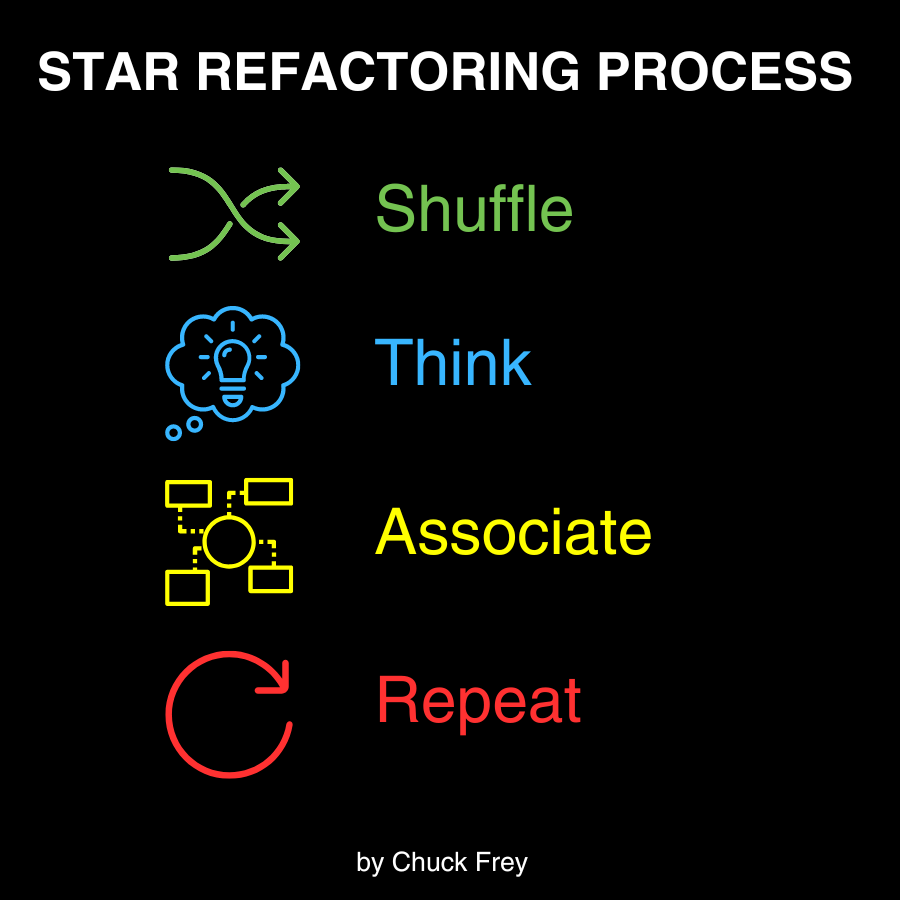
Mind mapping tools are an awesome way to support your thinking in a highly visual way. One of their unique capabilities – which only a small percentage of map creators take advantage of – is “refactoring.”
According to one mind mapping expert, this practice can increase the value of your mind maps by up to 80!
Refactoring defined
According to Wikipedia, refactoring is a set of processes used to improve the performance and stability of computer code, without altering its functionality. “… it improves the understandability of the code and changes its internal structure and design, and removes dead code, to make it easier to comprehend, more maintainable and amenable to change.”
In the context of mind mapping, refactoring is the process of moving topics from one part of your map to another and, in so doing, re-evaluating and reconsidering the relationship between that parent topic and its new sibling.
As Nick Duffill points out in his Beyond Mind Mapping Blog, “there is more information in the lines of a map than in the words.” The positioning of one piece of information as a parent topic and another as a child of it says something to the visual part of our mind about the relative importance of both items, and how they are related to one another.

The point is that the meaning and context of a topic may change dramatically as you move a topic from one location to another within a mind map. Fortunately, mind mapping software enables you to do a lot of “what-if” analysis. Move a topic to a new location. If it doesn’t make sense, move it again or use your program’s “undo” function to put it back where it was. In this way, you have almost total freedom to move topics and ideas around until they make the most sense.
According to Duffill, refactoring can increase the value of your map by up to 80%, by making it more complete and better organized.
Ask these refactoring questions
That’s why it’s important, when refactoring topics within a mind map, they you get in the habit of asking yourself questions like these:
- “What meaning does this topic have within its new context?”
- “What’s missing?”
- “What still needs to be added to make it more complete?”
Often, questions like these will trigger additional insights, which you can add to this part of your mind map.
Creating an effective mind map is an iterative process of adding content, then refactoring it, adding more items to it (suggested by your analysis of the topics you’ve moved within their new contexts), and so on. This process may take days or weeks to complete. And that’s OK, because when you re-visit a map you’re working on after a few days, you’re doing so with a fresh perspective – which tends to lead to new insights and fresh ideas. This multi-step process tends to yield maps that are more coherent, meaningful and complete.
What makes mind mapping a powerful refactoring tool is the speed with which you can do this. With every mind mapping tool I’ve ever used, it’s as simple as drag and drop!
The STAR refactoring process
Shuffle: Drag and drop one branch or sub-branch to a different location in your mind map.
Think: Consider how this topic fits within the context of its new “neighbors.” How is it related or connected to these topics?
Associate: Make a more permanent association between them by placing the idea you moved as a sub-topic of its new parent, or add a relationship line between them to make their connection more explicit.
Repeat: If the topic you moved doesn’t seem to fit in its new location, then use your application’s “undo” command to move it back to its previous location. Then select another topic at random to repeat the refactoring process.
Conclusion
So the next time you’re moving topics around a mind map, remember that there’s a deeper level of meaning you should be thinking about. Your maps will be much better as a result of doing so.


Leave a Reply